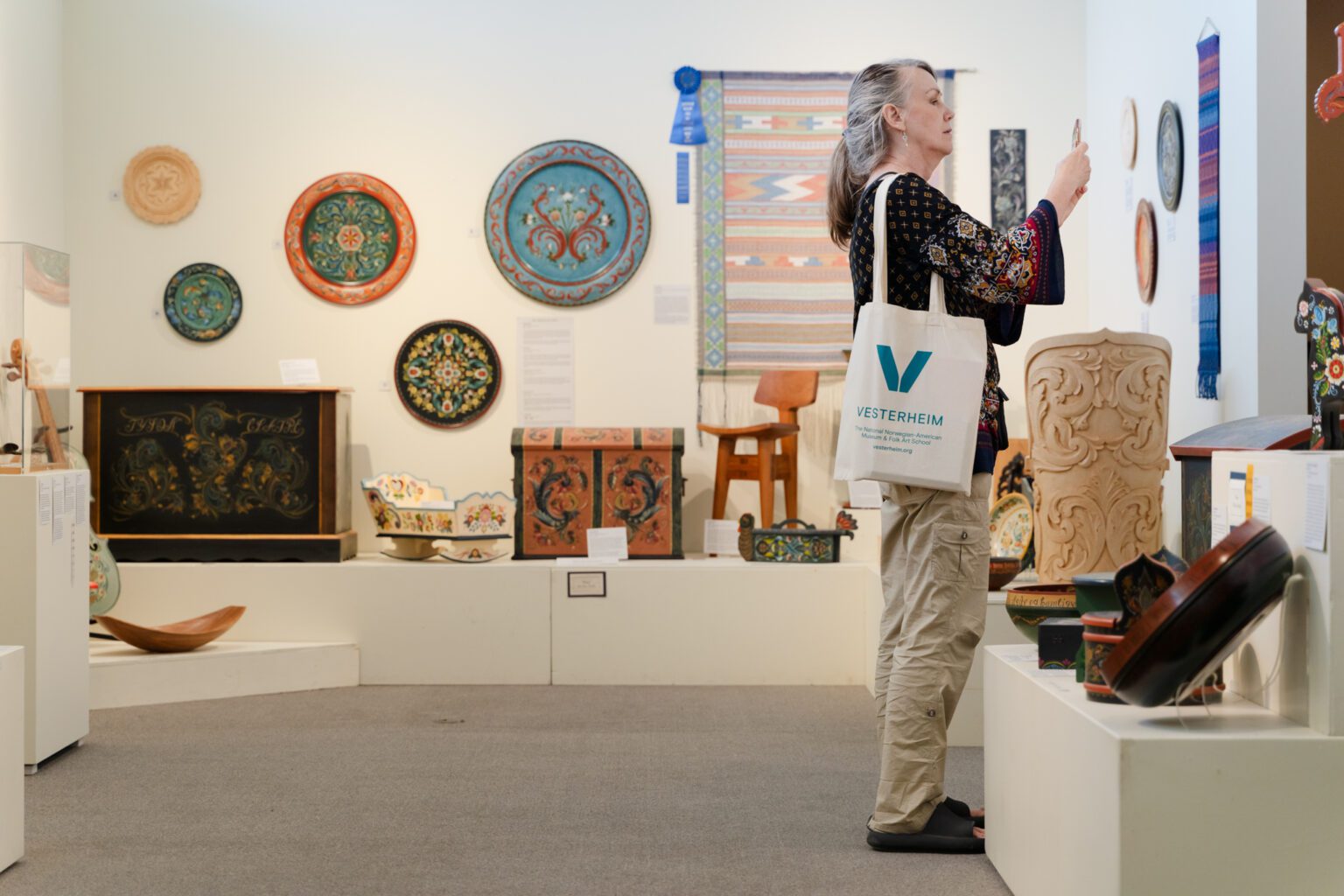The National Norwegian-American Folk Art Exhibition is a summer exhibition at Vesterheim in Decorah, Iowa. It showcases the self-expression of contemporary artists who create folk art rooted in Norwegian traditions. The mission of this exhibition is to celebrate the past, present, and future of folk art by encouraging and inspiring emerging and established folk artists to develop their craft. Artists submit work for evaluation by a team of judges, who offer feedback on their pieces and award ribbons to the very best work. The ribbons carry points that accumulate toward a Vesterheim Gold Medal.
How to Enter: All the information you need to enter is listed below! Read through the rules and regulations, print out the entry and label forms, and mail or deliver them to Vesterheim with your piece(s) and entry fee check from May 1-20, 2024.
You will need to print the PDF Entry Form and Identification Labels for EACH entry. (If you would like forms mailed to you, contact Lauryn Johnson at ljohnson@vesterheim.org or 563-382-9681. Please provide the number of entry forms you will need. Also, the PDFs are fillable forms, so if you wish, you can type your answers and then print.)
We look forward to seeing your pieces and sharing your artwork at Vesterheim!

